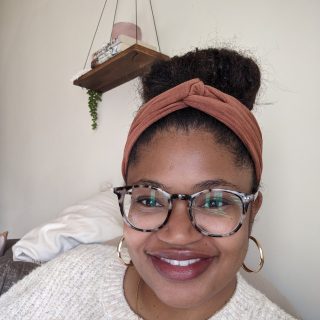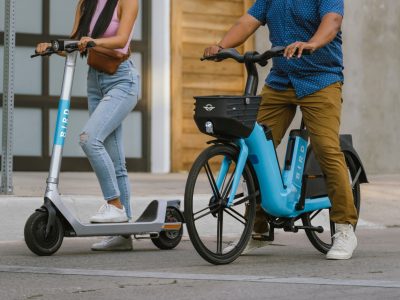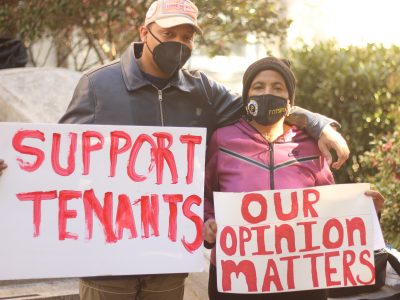Taylor Smith isn’t returning to school just yet.
While most schools in Guilford County reopened this week on a four-day in-person schedule, Smith, a junior at High Point Central High School, has elected to continue learning at home because she lives with her grandmother who is in an at-risk population. Neither Smith, nor her grandmother, have gotten vaccinated yet.
As it turns out, Smith could be in an at-risk population as well — not as it relates to COVID-19, but in terms of her education.
Historically, Smith said, she’s been a great student. She studies hard, knows when to ask for help and excels in her classes.
“I’ve always been a more hands-on student and being online has really made things a lot harder,” Smith said. “My grades started dropping and teachers would help as much as possible, but I got to a point where I wanted to give up.”
Smith said she’s had a hard time keeping up with her classes; the lack of face time with her teachers has really started to affect her plans for the future.
“This whole experience has made me question my career goals to be a cardiologist,” she said. “With my grades dropping and not being able to do any extracurriculars this year, now I’m considering going into the Navy first.”
Smith, a mixed-race student, is not alone. Black and Brown children in Guilford County and Forsyth County schools have been the main victims of learning loss related to the COVID-19 pandemic.
In March 2020, when schools, teachers, parents and students had to make the abrupt switch to online learning, everyone was on edge with uncertainty. More than a year later, as many students have returned to in-person learning, schools as a whole have to address the catch-up game that many students will have to play in order to perform at grade level.
According to Guilford County Schools’ MAP Growth assessments in math and reading administered to K-10 students this winter, white and Asian students outperformed Black, Hispanic and other students in both subjects. That goes for both in-person and remote learning. In fact, the achievement gap for Black and Brown students has widened during COVID-19.
Winston-Salem/Forsyth County Schools recorded a similar trend, with both Latinx and students from lower socioeconomic backgrounds underperforming compared to other demographics.
“Our data mirrors the state, which shows that students are struggling in math and science more, and our Latino population and population of low socioeconomic status are most affected,” said Nicolette Grant, WSFCS chief academic officer. “But as we’ve all seen, everyone has been impacted.”
In Guilford County, students seemed to be less proficient in math, while still not at average or above in reading either. Statewide and nationally, research shows that the trends are mostly the same. According to national data analyzed by McKinsey & Company, a management consulting firm, students of all backgrounds were negatively impacted by the pandemic, but students of color fared much worse. The report predicted that students of color will see a loss of 11 months or 12 months of learning, compared to seven months to eight months for white students.
Issues of hunger and technology persist during the pandemic
As the pandemic persisted, school administrators learned and adapted to what the students and teachers needed.
Both school systems in Guilford and Forsyth counties set up meal distribution sites for students to address the basic issue of child hunger.
WSFCS developed their CARES team that reaches out to students who were disengaging from their schoolwork and provided resources for the student and family. WSFCS also deployed internet hotspots, Chromebooks and Wi-Fi buses to help address internet access for students at home.
Bruce Blackwell, a social studies teacher at High Point Central, said that GCS did a great job addressing the basic needs of food and internet access, but some things were out of the system’s control.
“Every child is different, so I’ve got a few students who have flourished in the remote setting, but some really need that face to face,” he said. “Some were really missing that social aspect and others don’t do anything either way. Some kids would rather work than go to school and others needed to work because they’re now the breadwinners of their family.”
Although her daughter attends a private charter school, Aiesha Greer, a single mother working in healthcare, faced many of the problems the school systems tried to address.
“[My daughter] had a hard time staying focused at home and would do a lot better in the structure of the classroom setting,” she said. “I changed my work schedule, so I had to time to work with her, but I’m not a teacher. She does so much better when she has that face-to-face time with her teacher.”
Greer said that, in the beginning, there was a lot of independent work and it was difficult for them to stay on top of. Because of the change in the mode of instruction, schools decreased the amount of instructional time to balance screen time.
“We’ve had our fair share of challenges and she’s really ready to go back,” Greer said.
How can schools remedy learning loss?
Both WSFCS and GCS have made plans for summer programs this year to help mitigate some of the learning loss. Earlier this month, Gov. Roy Cooper signed the “Summer Learning Choice for NC Families” law, which requires school districts to offer K-12 students at least 150 hours or 30 days of in-person summer instruction, as well as enrichment activities in the arts and athletics. The programs are also open to charter, private and home-school students.
Both school systems intend to reach out to the most at-risk students for their summer programs. GCS and WSFCS will use targeted tutoring for middle and high school students while small-group instruction will be used for elementary and middle school students in reading and math. There will also be learning and program opportunities for students with special needs, students who are incarcerated, and enrichment programs for English learners.
Blackwell and Grant both said that they hope the needs exacerbated during the pandemic will push schools to make beneficial changes.
“We’re educators so we are constantly teaching and learning, reflecting and changing,” Grant said. “It has been a very challenging year and loss and death have effected our community. We have to constantly evolve and make adjustments for what will be better for our students and teachers.”
Join the First Amendment Society, a membership that goes directly to funding TCB‘s newsroom.
We believe that reporting can save the world.
The TCB First Amendment Society recognizes the vital role of a free, unfettered press with a bundling of local experiences designed to build community, and unique engagements with our newsroom that will help you understand, and shape, local journalism’s critical role in uplifting the people in our cities.
All revenue goes directly into the newsroom as reporters’ salaries and freelance commissions.





This sickens me! When you say “students of color,” ‘white’ students ARE included. Writers and Publishers like this are a huge problem for our society. My son is 17, we recently moved here, he has to change high schools for the THIRD time and he is a football player..the reason…”black and brown” football coaches and head coach, last at Parkland, discriminated against him to the point the Superintendent is giving him a school choice, of only 4 schools, to keep it from the school board, which is not going to happen. He has fallen extremely behind in his classes and NO ONE at either school showed any concern. The head football coach told him not to come to study hall until I got involved. You should be ASHAMED OF YOURSELF for writing this garbage, ALL students are suffering…not just black and brown, as you stated, students. You are part of the problem!!!!